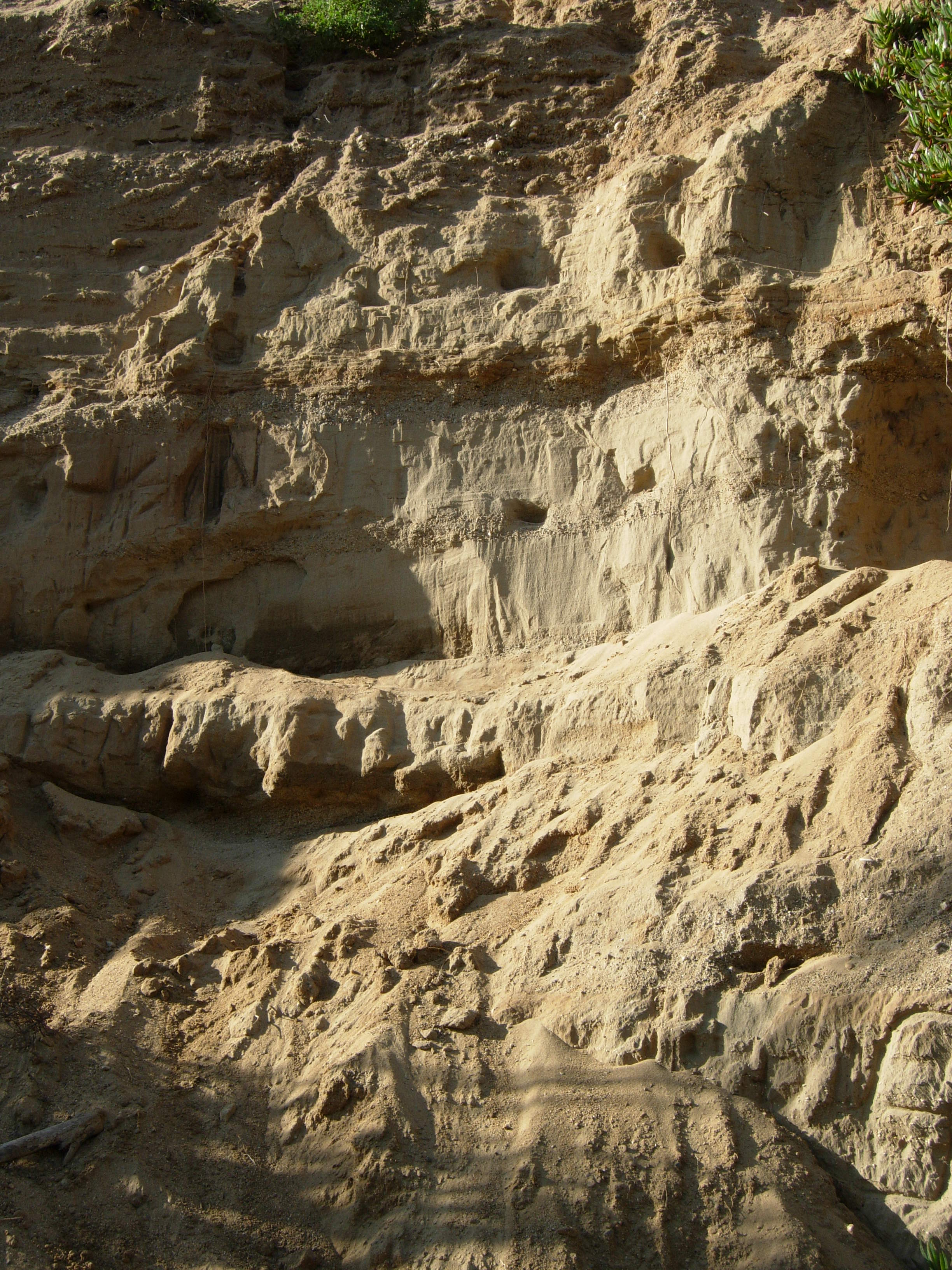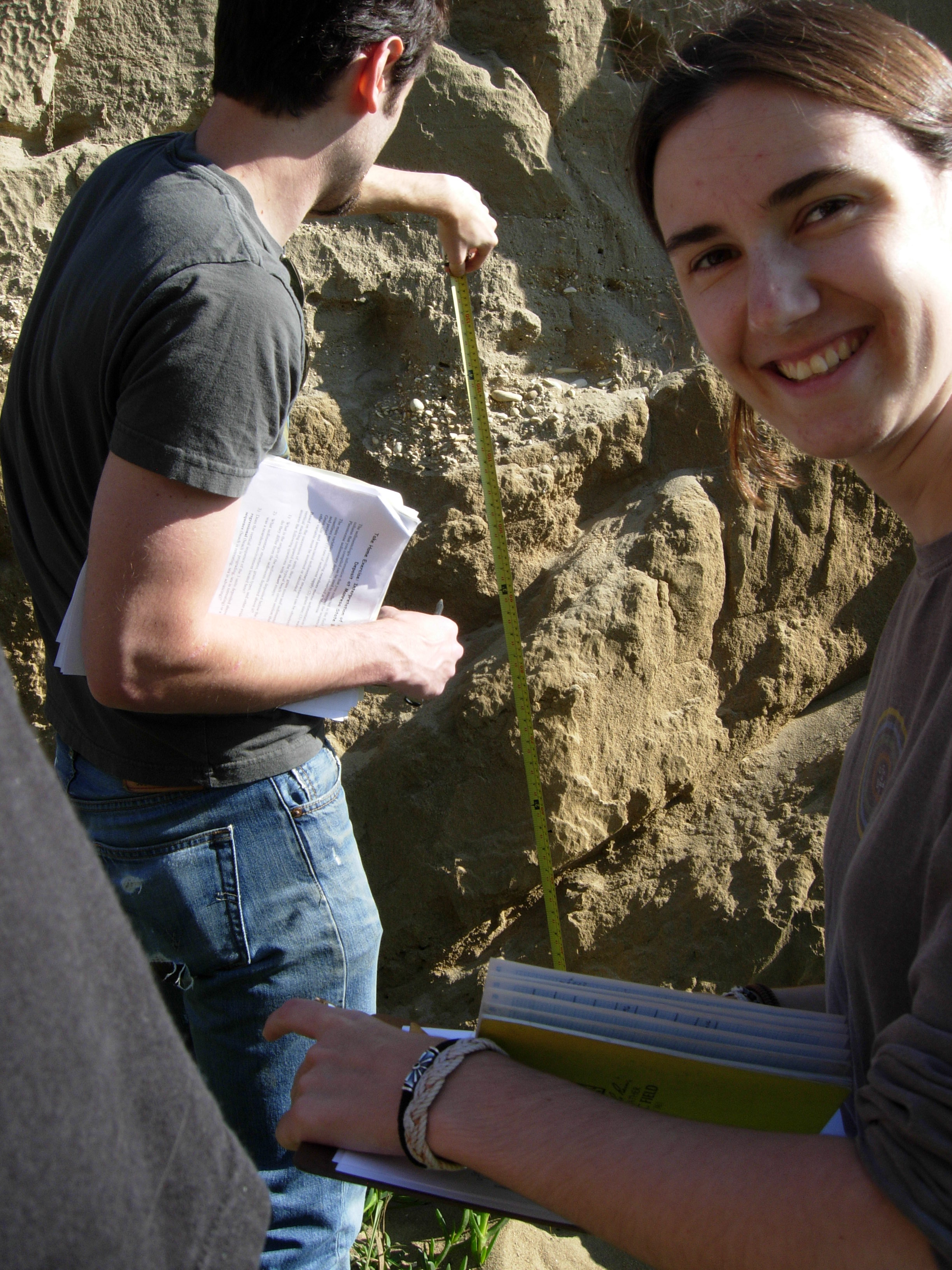
By Michelle Marraffini, Invertebrate Zoology
They say a photo tells a thousand words, well the one I took that day has an amazing story. With the wind at our backs and a clear blue sky over head we walked along Manresa State Beach, over a dune towards a very special spot. We came across this piece of ancient beach. The bottom layer of the outcrop is the oldest layer that was deposited by winds moving sand from the beach inshore to form a dune. This dune fossilized, then sea level rose and the dune became submerged as a wave cut bench, similar to rocky intertidal areas seen along the coastline. Waves caused part of this layer to be eroded and the wave cut bench became completely submerged and became the inner continental shelf about 125,000 years ago. More sediment including pebbles to fine sand grains, was deposited on top of this bench, but then current re-suspended the fine sediments leaving only the pebbles behind.
Sea level dropped (or the shelf was uplifted) and the area became closer to shore called the near shore-offshore transition. Here storms deposited coarser sediments and finer sediments were deposited in calmer times creating cross bedding. As the water continued to recede the once beach dune moved into the surf zone creating alternating dark and light bands of sediments. This entire story was interpreted by students as they took measurements including unit height, grain size of particles, and the types of sediments in each layer. The best part of Geographical Oceanography is telling the story of our ancient coastline.


